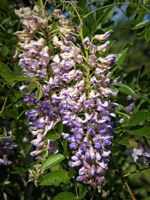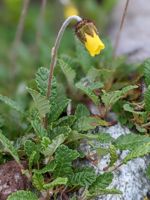Mon-Fri 9am - 5pm Mountain time
Blue Moon Wisteria vs Yellow Mountain Avens
Wisteria macrostachya Blue Moon
Dryas drummondii
CUSTOM GROW
Blue Moon Wisteria is a striking, flowering vine, and the hardiest of the wisterias. Up to three times in one growing season you can expect showy, fragrant, lavender-blue flowers.
Make sure you plan your site as this vine requires a structure to support its mature weight. Try planting close to a post, trellis, or fence.
Yellow Mountain Avens is a native perennial wildflower with bright yellow buttercup-like blooms. The nectar-rich flowers attract a variety of pollinators, including bees and butterflies. By thriving at higher elevations, it helps sustain pollinator populations and provides one of the earliest sources of nectar and pollen in alpine habitats. After the blooms fade, the plant produces silky seed heads that begin as upright, compact tufts and gradually expand into rounded, fluffy clusters, adding texture and interest to the landscape.
As a nitrogen-fixing plant, Yellow Mountain Avens enriches soil fertility and supports the growth of surrounding vegetation. It forms dense, spreading mats of evergreen foliage that act as a groundcover and help stabilize soil. Often among the first species to establish in disturbed alpine sites such as glacial outwash or landslides, it is well-suited for alpine revegetation, erosion control, naturalization, and ecological restoration projects in harsh, rocky environments.
Blue Moon Wisteria Quick Facts
Yellow Mountain Avens Quick Facts
Toxicity: can be toxic to cats, dogs, and horses when consumed

